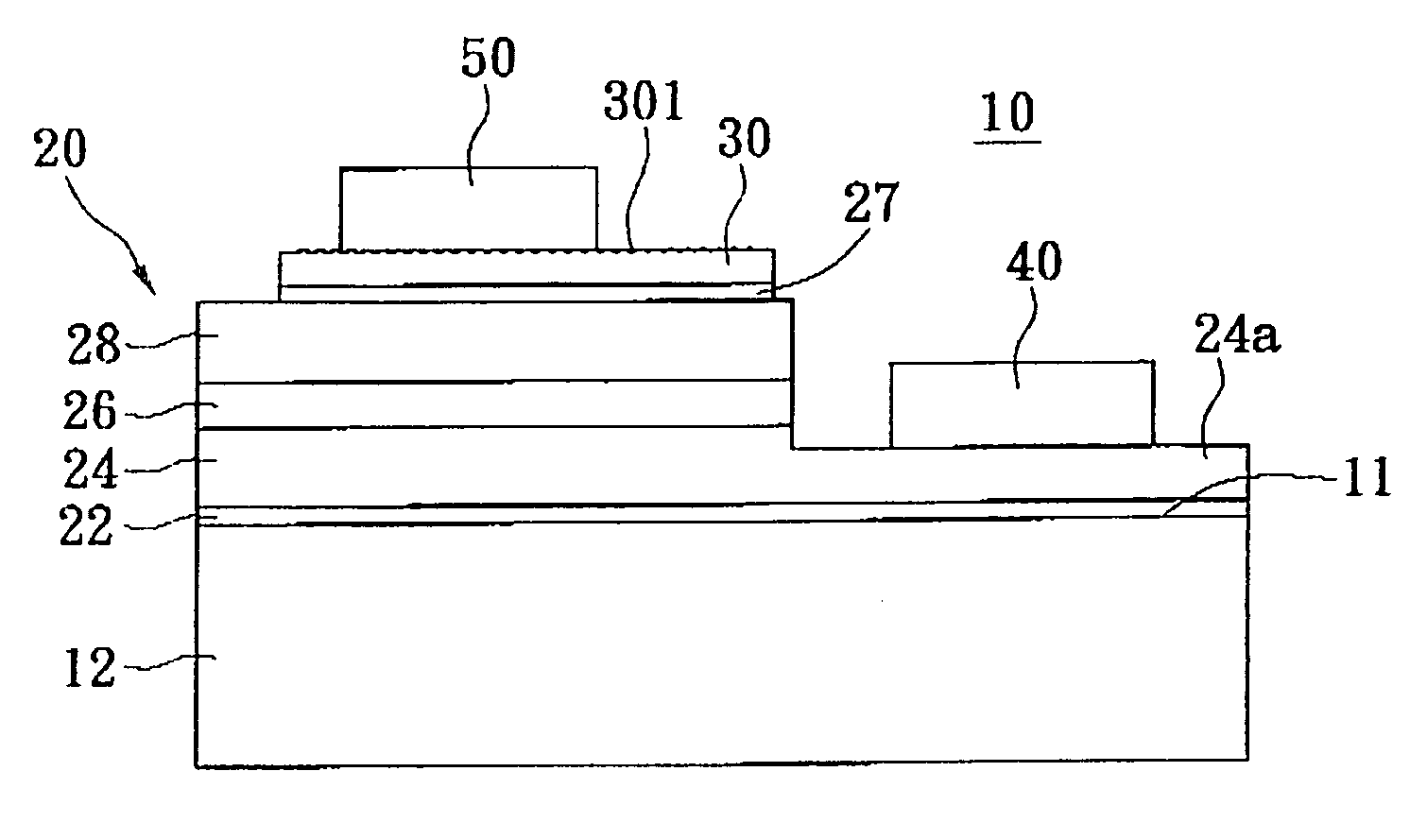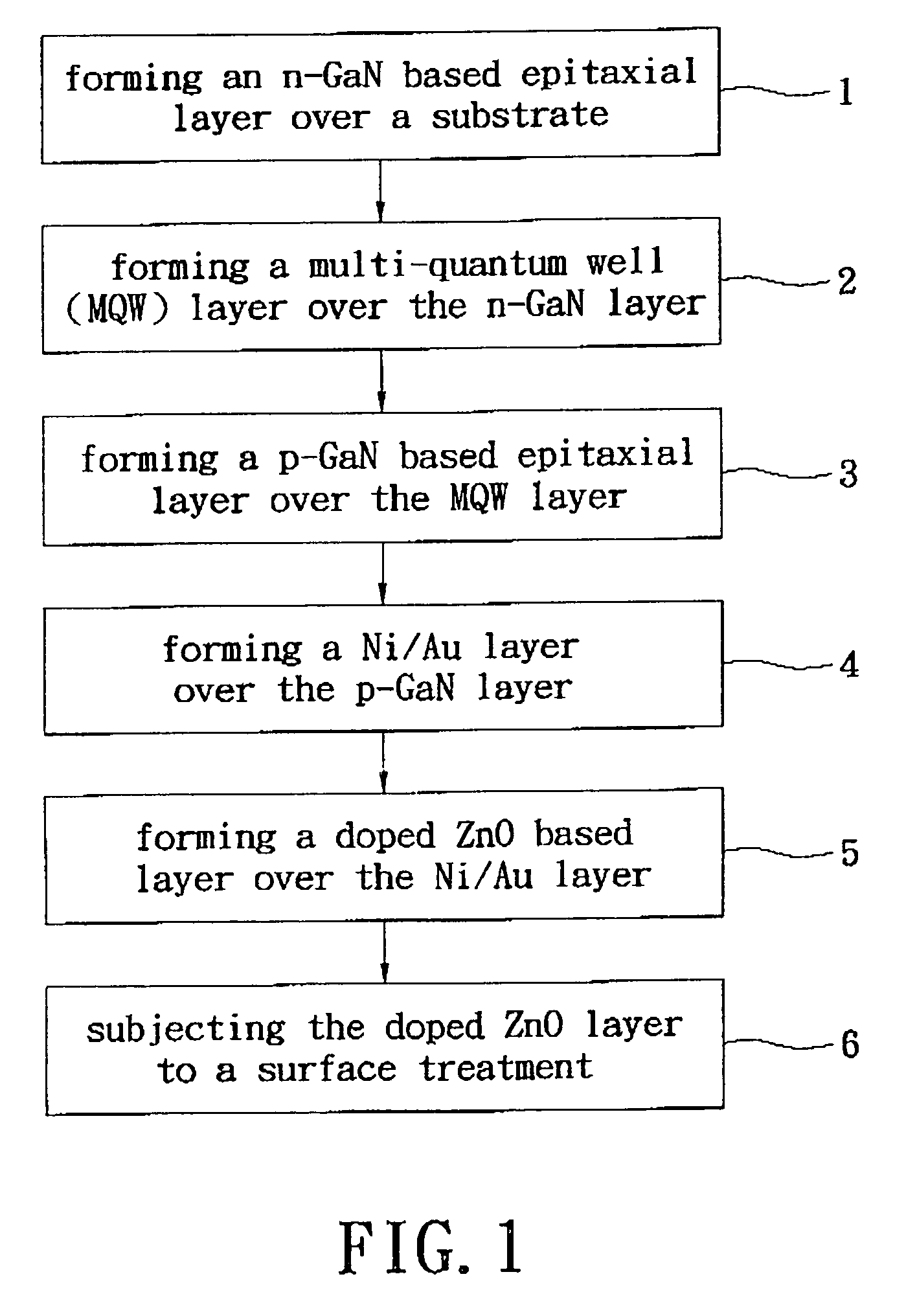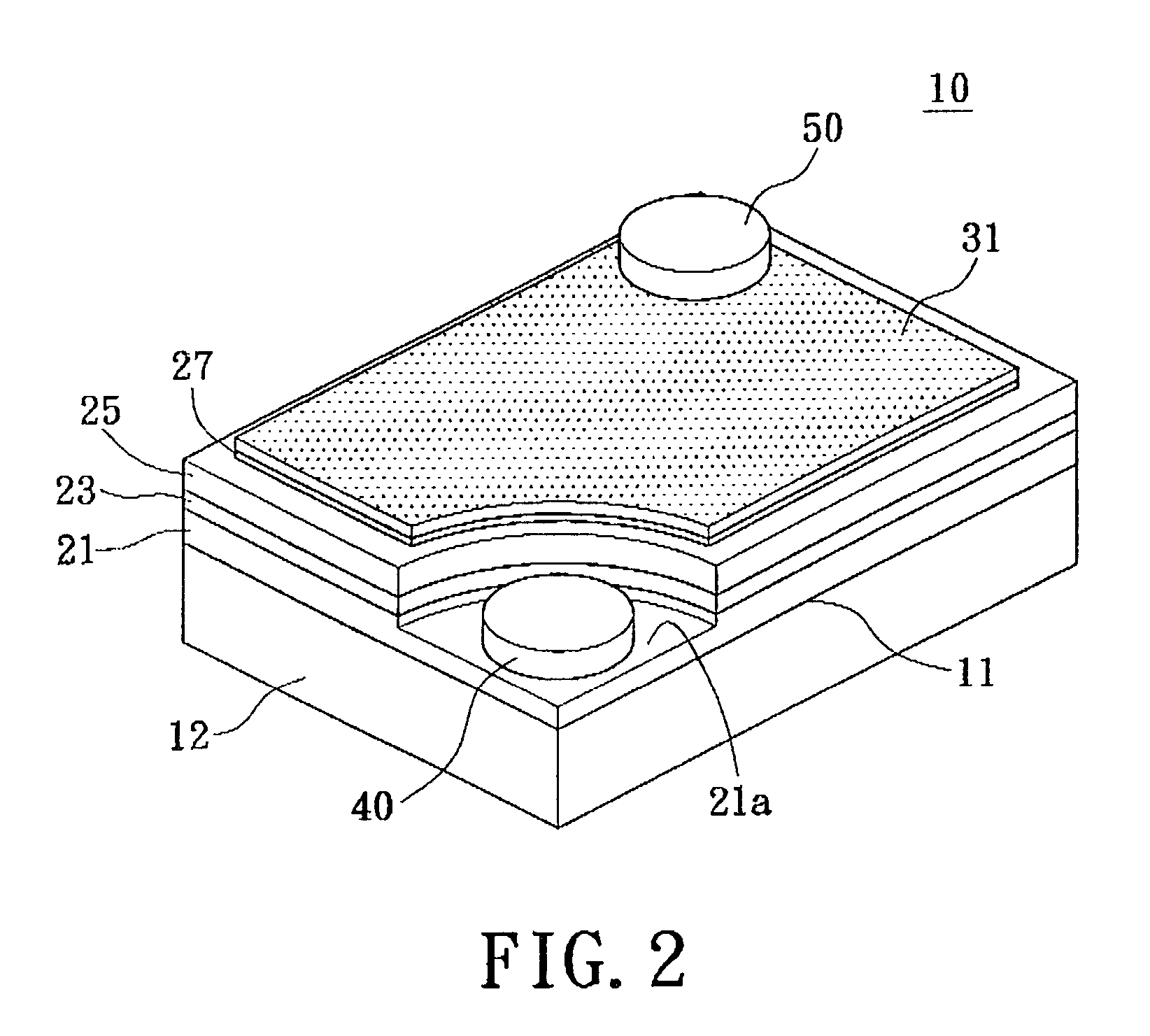Gallium nitride based compound semiconductor light-emitting device
a compound semiconductor and light-emitting device technology, applied in semiconductor/solid-state device manufacturing, semiconductor devices, electrical equipment, etc., can solve the problems of ineffective stimulation of p-n structure, insufficient light-emitting efficiency of led, and insufficient conductivity of inventive tcl, etc., to achieve better light-emitting performance, improve light extraction, and improve light-transparency performance
- Summary
- Abstract
- Description
- Claims
- Application Information
AI Technical Summary
Benefits of technology
Problems solved by technology
Method used
Image
Examples
second embodiment
[0046]Referring to FIGS. 9 and 10, which illustrate the present invention. In the embodiment, transparent doped InxZn1−xO is used as the light extraction layer or window layer 32, wherein 0≦X≦1. The steps used in this embodiment are generally similar to those in the preferred embodiment except for the steps, Steps 5a and 6a, which are different from Steps 5 and 6 of the preferred embodiment. In this embodiment, Step 5a: forming an doped InxZn1−xO layer 32 over the Ni / Au layer 27. Similarly, the layer 27 serves as an ohmic contact layer and the layer 32 is preferably thicker than 1 μm. Step 6a: subjecting the doped InxZn1−xO layer 32 to a surface treatment. When the thickness of the layer 32 is larger than 1 μm, the layer 32 may be formed through a surface treatment as a roughened surface 321 or particularly textured surface.
third embodiment
[0047]Referring to FIGS. 11 and 12, which illustrate the present invention. In the embodiment, transparent doped SnxZn1−xO is used as the light extraction layer or window layer 33, wherein 0≦X≦1. The steps used in this embodiment are generally similar to those in the preferred embodiment except for the steps, Steps 5b and 6b, which are different from Steps 5 and 6 of the preferred embodiment. In this embodiment, Step 5b: forming a doped SnxZ1−xO layer 33 over the Ni / Au layer 27. Similarly, the layer 27 serves as an ohmic contact layer and the layer 33 is preferably thicker than 1 μm. Step 6b: subjecting the doped SnxZn1−xO layer 33 to a surface treatment. When the thickness of the layer 33 is larger than 1 μm, the layer 33 may be formed though a surface treatment as a roughened surface 331 or particularly textured surface.
fourth embodiment
[0048]Referring to FIGS. 13 and 14, which illustrate the present invention. In the embodiment, a transparent doped InxSnyZn1−yO layer is used as the light extraction layer or window layer 34, wherein 0≦X≦1, 0≦Y≦1 and 0≦X+Y≦1. The steps used in this embodiment are generally similar to those in the preferred embodiment except for the steps, Steps 5c and 6c, which are different from Steps 5 and 6 of the preferred embodiment. In this embodiment, Step 5c: forming a doped InxSnyZn1−yO layer 34 over the Ni / Au layer 27. Similarly, the layer 27 serves as an ohmic contact layer and the layer 34 is preferably thicker than 1 μm. Step 6c: subjecting the doped InxSnyZn1−yO layer 34 to a surface treatment. If the thickness of the layer 34 is made larger than 1 μm, the layer 34 may be formed through a surface treatment as a roughened surface 341 or particularly textured surface.
[0049]The dopants used in the doped metal oxide layer may at least be Al . Once the activation energy of the holes in this...
PUM
 Login to View More
Login to View More Abstract
Description
Claims
Application Information
 Login to View More
Login to View More - R&D
- Intellectual Property
- Life Sciences
- Materials
- Tech Scout
- Unparalleled Data Quality
- Higher Quality Content
- 60% Fewer Hallucinations
Browse by: Latest US Patents, China's latest patents, Technical Efficacy Thesaurus, Application Domain, Technology Topic, Popular Technical Reports.
© 2025 PatSnap. All rights reserved.Legal|Privacy policy|Modern Slavery Act Transparency Statement|Sitemap|About US| Contact US: help@patsnap.com



